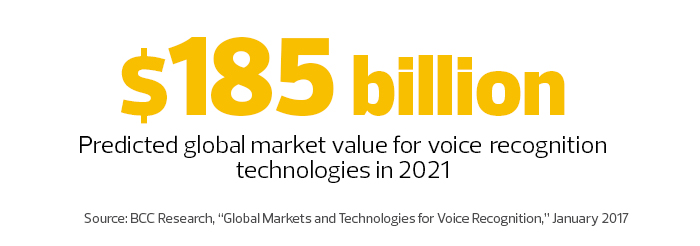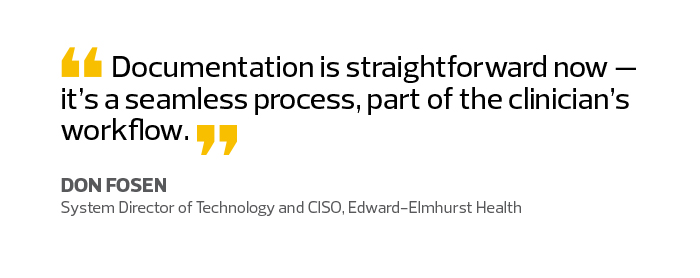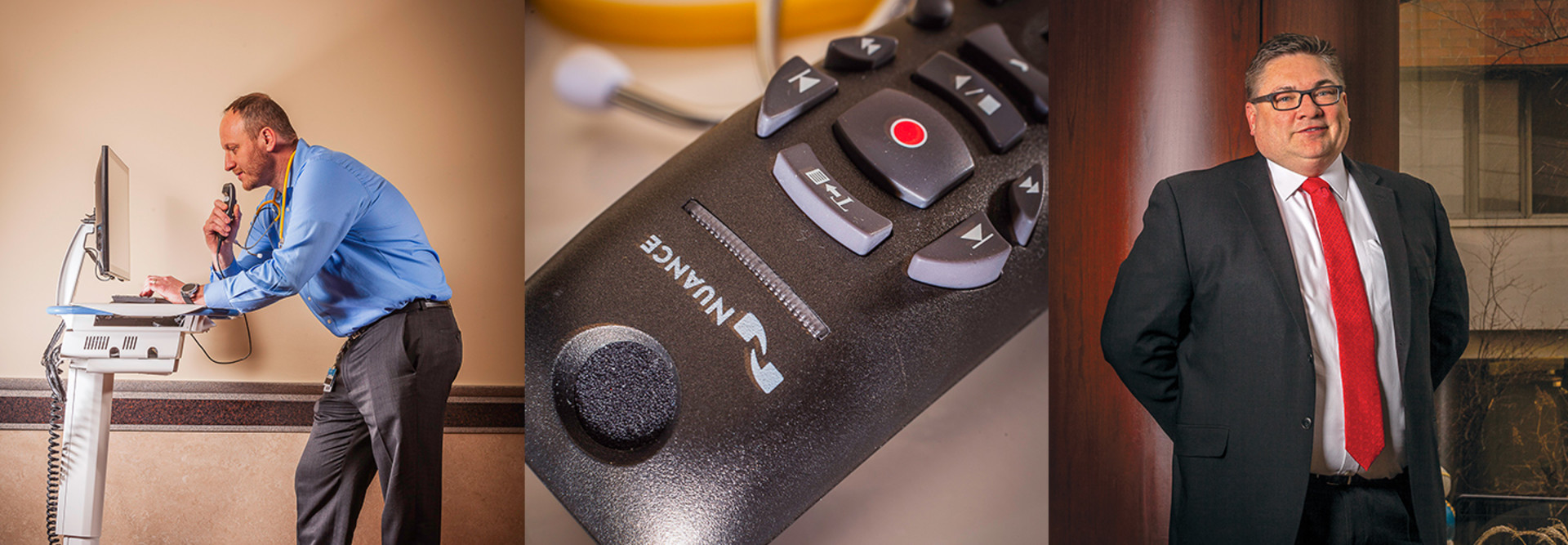Speech-Recognition Tech Has Clinicians Talking About Time Savings
With research showing that many physicians are frustrated with the increased clerical burden of updating patients’ electronic health records, a growing number of providers are embracing a solution designed to ease their pain: speech recognition technology. Such a tool helps providers streamline their care documentation processes so they can spend more time focused on patient care, experts say.
“Doctors have so much on their plates already, and then on top of everything else they have the EHR,” says System Director of Technology and CISO Don Fosen of Edward-Elmhurst Health. “This software makes their lives a little bit easier, and it improves productivity at the same time.”
For the Naperville, Ill.-based organization, Nuance’s Dragon Medical speech recognition platform allows clinicians to speak their notes directly into an EHR using a secure mobile app as a microphone on their personal device or through one attached to a workstation. As the words are processed by the software, the patient’s medical record is updated instantly.
This not only saves the organization money because the task of transcription is now handled internally and automatically, Fosen says, but it’s also improving the clinical collaboration process among providers because other clinicians are able to see a patient’s notes as soon as they’re entered by the treating physician.
“It’s really a very powerful tool, and it’s saving everyone all kinds of time,” Fosen says. “Documentation is straightforward now — it’s a seamless process, part of the workflow.”
Smart Assistants Enable Hands-Free Clinical Help
Some organizations are pushing the boundaries of speech recognition even more. At Boston Children’s Hospital’s Innovation and Digital Health Accelerator, clinicians, researchers and others are piloting the use of Amazon Alexa technology that allows doctors and nurses to pull up information on demand to help in the treatment of patients in settings, including the intensive care unit. Currently, IDHA is working with the hospital’s transplant team to test a voice-prompted checklist that enables hands-free validation.

In an article in the Harvard Business Review, the researchers call physician receptivity “greater than anticipated.” IDHA has also developed KidsMD, a program that allows parents to talk to Alexa-enabled devices such as Amazon Echo to obtain information about common illnesses such as a cold or a fever.
Microsoft also recently announced a new project as part of its Healthcare NExT technology development program, a scribe powered by artificial intelligence for physicians. The tool, created as part of the company’s collaboration with the University of Pittsburgh Medical Center, records and synthesizes encounters between doctors and patients, and then creates note suggestions that physicians can choose to add to a patient’s EHR.
Speech Tech Offers a ‘You Talk, It Types’ Assist
The potential for speech recognition to boost EHR usability has led many others to consider its use. Black Book Market Research predicts spending on such tools will expand at an annual growth rate of nearly 13 percent through 2020.
Dr. Gregory Kenien, chief medical information officer at St. Joseph’s Health Center in Syracuse, N.Y., says the benefits of speech recognition technology use at his facility are immediate. “You talk, it types, you click and sign,” he says. “It’s very accurate, and you can go back and train it, if it’s mistaking your potato for tomato, for instance, but you do need to double check everything.”
At St. Luke’s University Health Network in Fountain Hill, Pa., Dr. James Balshi, a vascular surgeon and chief medical information officer, says speech recognition “has transformed the way we manage the EHR.”

The software allows users to create verbal macros, Balshi says. “I can say, ‘click normal physical exam,’ and it populates a paragraph of preloaded information that I can modify.”
Clinicians Garner Tremendous Time Savings
Balshi can also use verbal commands to quickly transition between the notes page for documenting a visit and a patient medication order.
“For us, it’s become a tremendous time-saver,” he says.
Looking ahead, Balshi is eager to adopt new iterations of speech recognition he recently saw in action at an industry conference. In one demonstration, a user asked the tool to change the dose of a medication. The program examined the patient’s medical record, brought up their old prescription, and entered the new order automatically, Balshi says. All the doctor had to do was review everything and give a quick voice command to sign the order.
“This technology is already amazing today,” Balshi says, “but in the future, it’s going to be incredible.”









